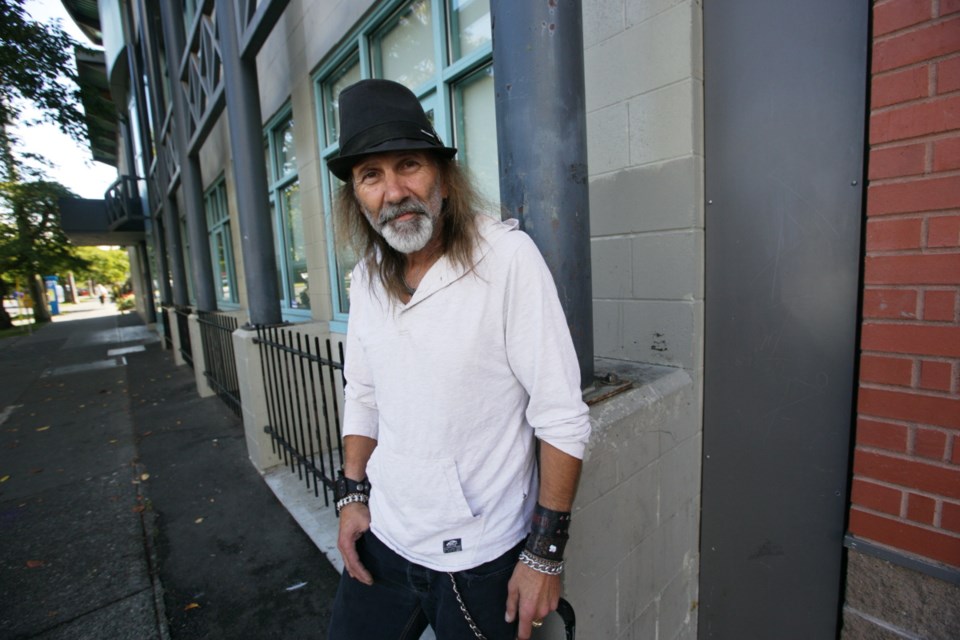Illicit drug users, front-line workers and academics are calling on the government to create safer consumption sites in the wake of an alarming increase in overdose deaths in Victoria this year.
“People are dying. All kinds of people. It could be your neighbour or that person on the street — who you have no idea why they’re using drugs,” said Katie Lacroix, chairwoman of the Society of Living Illicit Drug Users (SOLID) and a member of Yes 2 Supervised Consumption Services (Yes2SCS).
“There is a huge lack of space for people to use safely.”
The organizations are hosting a community candlelight vigil today at 7:30 p.m. at Centennial Square to mark International Overdose Awareness Day. The event is to honour those who have died by overdose and share information about what can be done to prevent more deaths.
“Although we’ve had a lot of success with people distributing naloxone, people are still dying at an unprecedented rate,” Lacroix said. Naloxone is a life-saving antidote to the fatal effects of heroin and fentanyl.
Provincial public health officer Dr. Perry Kendall declared overdose deaths a public health emergency in April. In the first seven months of this year, 433 people in B.C. have died from drug overdoses — a 74 per cent increase from 2015. Two-thirds of those deaths were related to fentanyl, a highly toxic synthetic opiate used to cut drugs such as heroin and cocaine.
In Victoria, 34 people died by overdose between January and July. In 2015, there were 17 deaths in total.
Nearly half of surveyed high-risk drug users in Victoria said they have used service-provider washrooms to consume drugs in the past year, according to a report released Tuesday.
“They’re perceived as safer spaces, so people are using them as de facto consumption sites,” said Bruce Wallace from the Centre for Addictions Research of B.C. at the University of Victoria.
The report showed drug use in local agency washrooms had doubled compared with a similar study last year. It also showed overdose calls to Victoria police doubled from 2015 and that they came mostly from social-service and harm-reduction agencies.
“This has been declared a public health emergency. We need to be providing emergency services in a much faster fashion,” Wallace said, noting the province’s task force and increased naloxone distribution are not enough and that the new federal Bill C-2 puts a lot of red tape on the setting up of new safe consumption sites.
The report also showed the increase in overdoses is requiring staff at social agencies to administer naloxone and call 911 more often.
Grant McKenzie, communications director at Our Place Society, said he found a man who had overdosed in a washroom at the shelter and drop-in centre a few weeks ago.
“He had probably just been there a few minutes. He was blue and unconscious on the floor,” McKenzie said. He called outreach team members trained to use naloxone and a defibrillator. The man was rushed to hospital, where he died.
McKenzie said the man, in his 50s, was well liked, a talented musician and advocate for the poor.
Our Place chaplain Julianne Kasmer said the increasing number of memorials being held at the shelter is taking its toll.
“Memorials used to be well attended, but it’s gotten to the point where people have difficulty coming. They are faced with the accumulative loss of so many friends,” she said, adding often those who get up at memorials speak frankly about overdose dangers and the need for help.
Jerry Bystedt has lived in transitional housing at Our Place for a year. He said the constant memorial notices posted on the front door are jarring.
“I’ve gotten to the point where I’m not grieving. It’s just denial,” Bystedt said. He went through an abstinence program to stop using drugs, but said he sees the value in safe consumption sites and is considering getting training to use naloxone.
“I call them needless deaths.”
Heather Hobbs at AIDS Vancouver Island said the organization has offered naloxone training and kits since 2013.
“When we came on board with the program, it was something we did off the side of our desks. Now, it is a major part of our programming,” she said. Since April, Hobbs said they have distributed between 62 and 91 kits a month and trained between 97 and 107 people a month.
“Our focus is primarily people who use drugs or are around people who use drugs, but there has also been an increase in requests for training from organizations,” said Hobbs. Free kits are given to those most at-risk and who can’t afford them. But they are also available over-the-counter at local pharmacies for about $60, she said.
“It’s empowering for the people we serve. They are saving each other’s lives … and it’s a gateway into other conversations about safety as well.”
Hobbs said in honour of International Overdose Awareness Day, the organization is hosting free naloxone and overdose response training today every half hour between 10 a.m. and 3 p.m.
Drug overdose deaths already surpassing 2015
Top three municipalities for overdose deaths in B.C., 2007 to 2016
• Vancouver
• Surrey
• Victoria
Overdose deaths in B.C.
• 2016 (January to July): 433
• 2015 (full year): 474
• 2014 (full year): 365
Overdose deaths on Vancouver Island
• 2016 (January to July): 87
• 2015 (full year): 61
Overdose deaths in Victoria
• 2016 (January to July): 34
• 2015 (full year): 17
Fentanyl-detected overdose deaths
• 2016 (January to June): 62 per cent
• 2014: 25 per cent
• 2012: Five per cent
Overdose calls to Victoria police
• 2015: 181
• 2011: 93
Source: B.C. Coroners Service, CARBC



